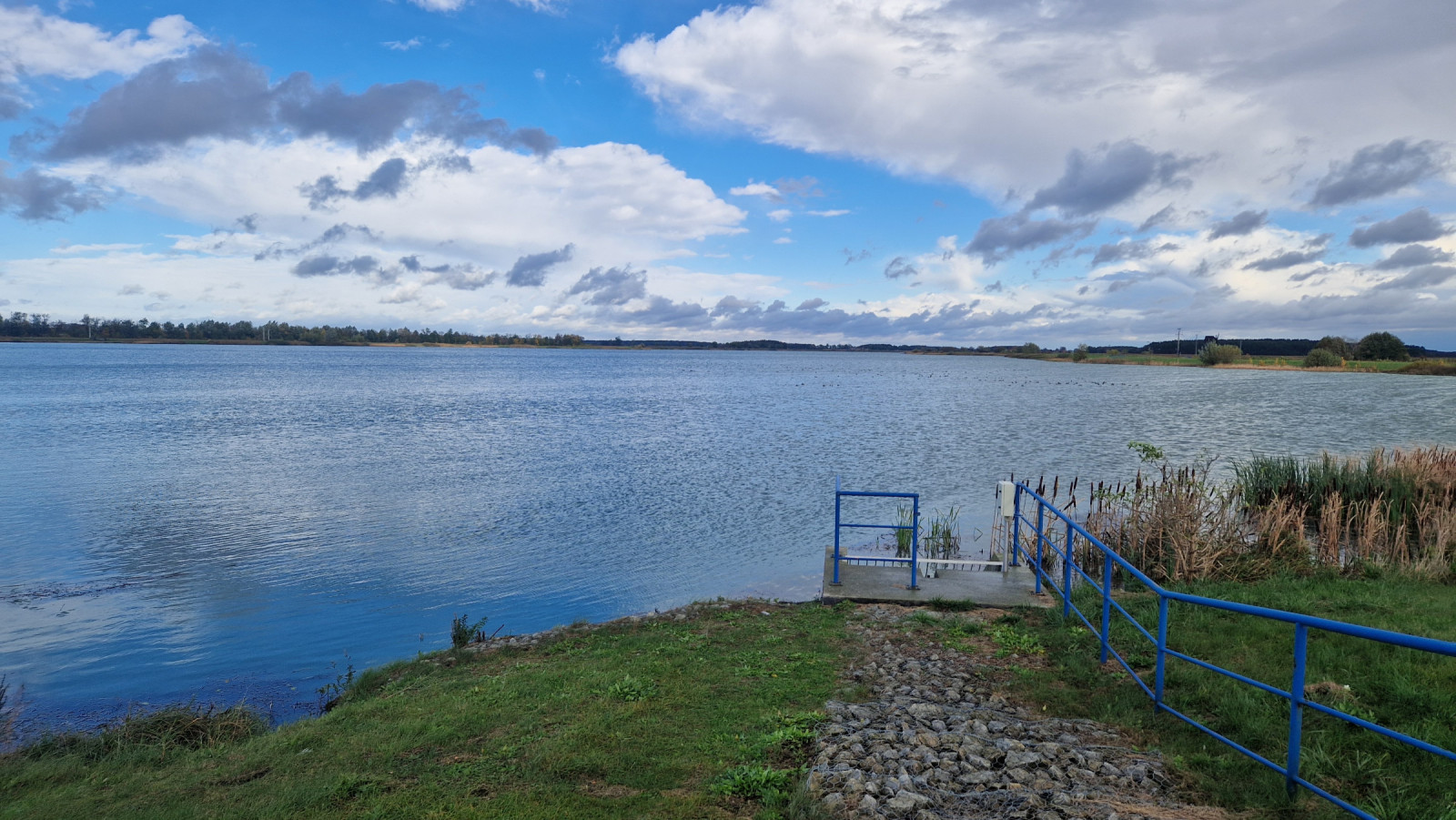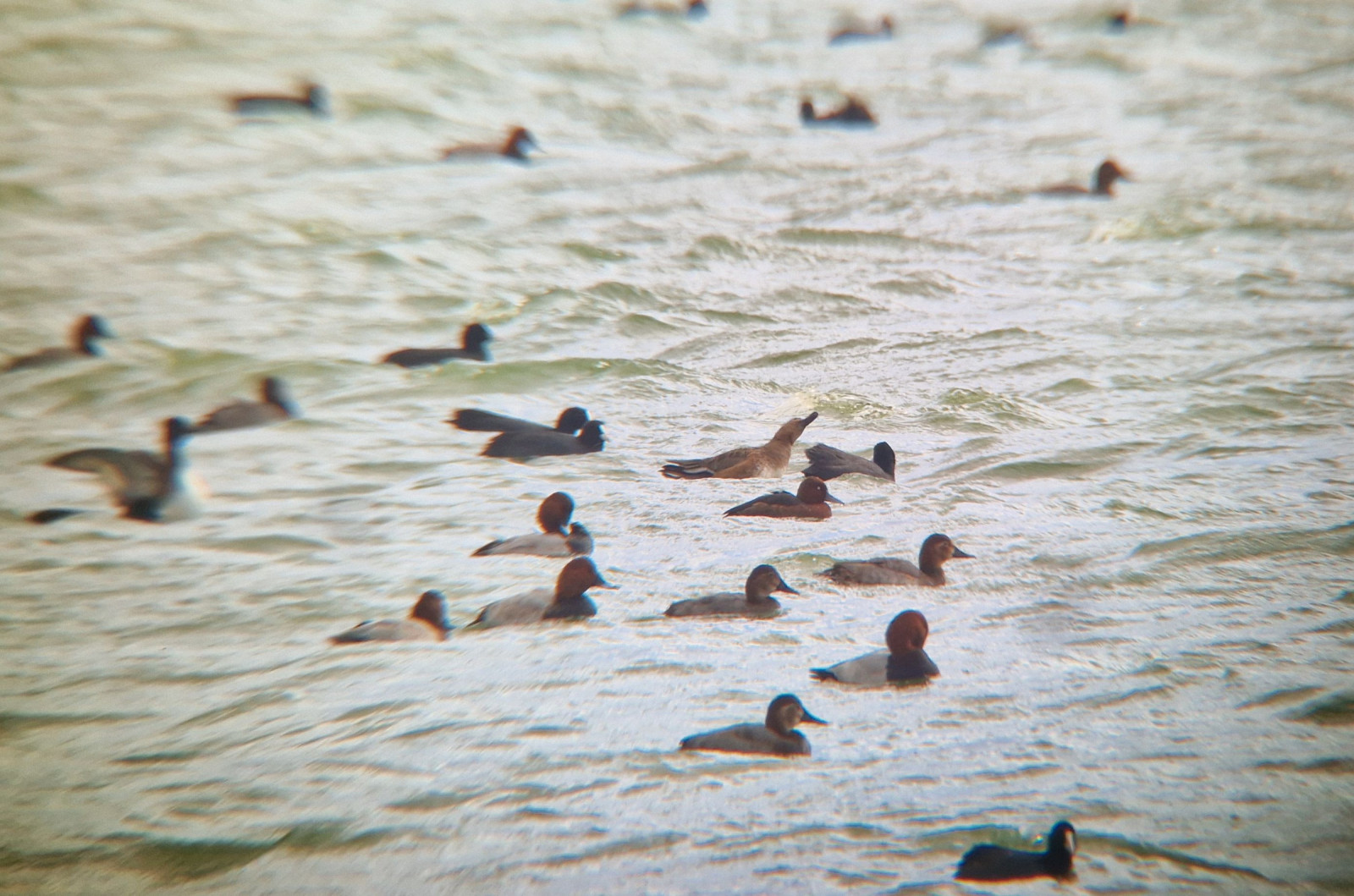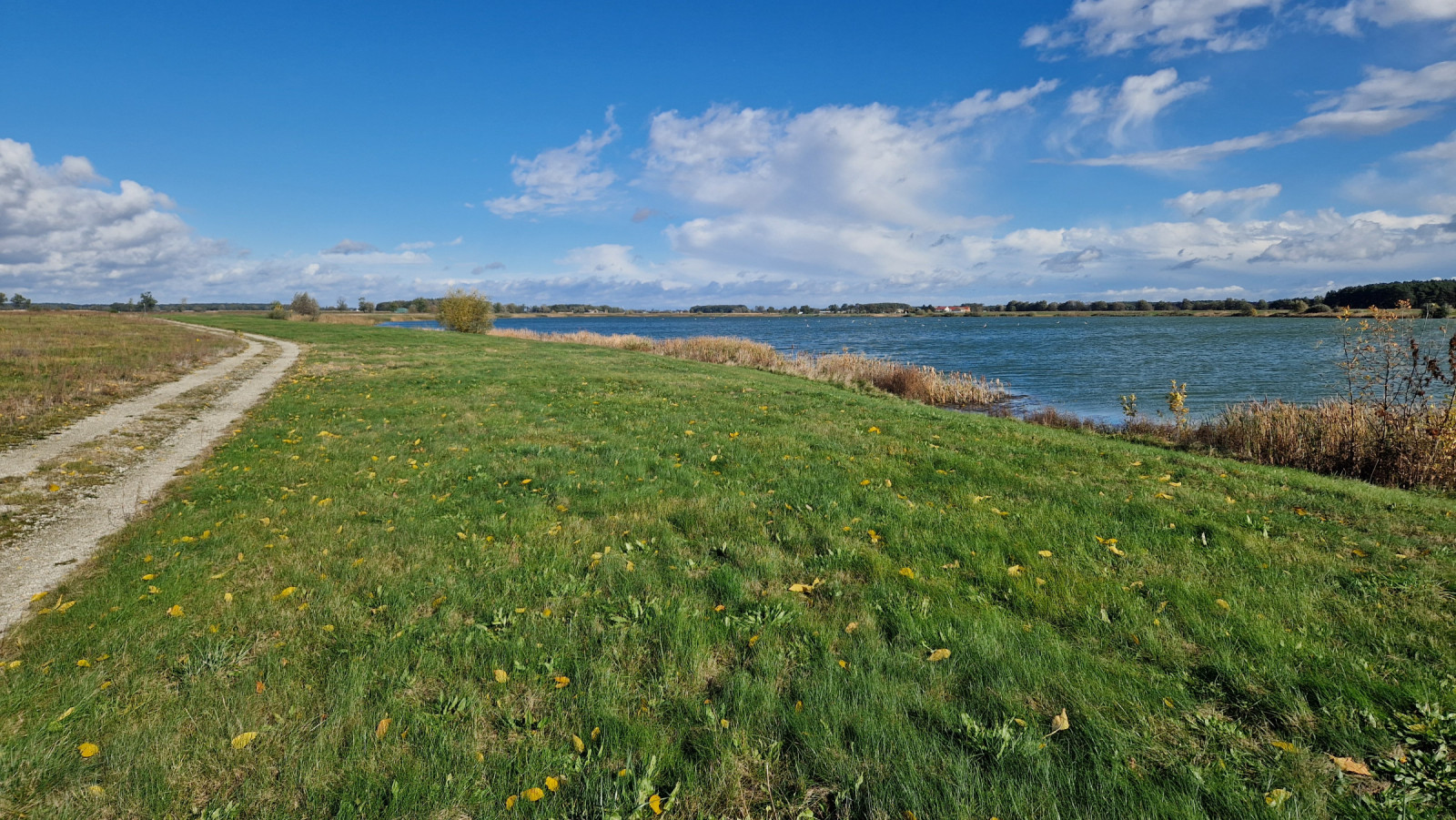Descripción
The Jutrosin reservoir (Zbiornik Jutrosin) is an artificial reservoir with an area of approximately 90 hectares. It is located on the border of the town of Jutrosin and is surrounded by agricultural land. A wide path leads around the reservoir on the embankment, thanks to which the reservoir is very visible. There are benches and picnic tables every few hundred meters. The place is frequented by walkers and anglers. The Barycz Valley is located about 15 km south of the reservoir, so many birds move during the day between the fish ponds from the Stawno or Ruda Sułowska complexes and the reservoir.
Especially during the spring and autumn migration period, it is an excellent place to observe water birds - mainly ducks. Diving ducks are particularly numerous: Porrón Europeo whose numbers often reach over 1000 individuals, Porrón Moñudo, Porrón Osculado. Single Pato Colorado and Porrón Pardo are also regularly observed here. Sometimes Malvasía Cabeciblanca. In late autumn, also Porrón Bastardo. The true ducks are also represented mainly by Ánade azulón, but also Cuchara Común, Ánade friso, Cerceta Común, Silbón Europeo, Ánade rabudo norteño. Another species that occurs in large numbers is Focha Común, whose flocks reach 2-3 thousand. On the reservoir, during the autumn migration, you can also observe Somormujo Lavanco, Somormujo Cuellirrojo, Zampullín Común, Zampullín Cuellinegro and, less frequently Zampullín Cuellirrojo. In the surrounding fields Cisne Vulgar and Cisne Cantor often feed, which also come to the reservoir. Geese like Ánsar Campestre de la Tundra and Ánsar careto can also be observed, but much less numerous than in the Barycz Valley.
Charadriiformes stop in small numbers, but a lot depends on the water level. In "dry" years, exposed banks appear, which attract waders.
_________________________
Polski : Zbiornik Jutrosin położony jest w południowej Wielkopolsce, ok. 20 km na wschód od Rawicza oraz 15 km na północ od Doliny Baryczy. Jest to sztuczny zbiornik o powierzchni ok. 90 ha. Położony jest na granicy miasta Jutrosin i otoczony jest terenami uprawnymi. Dookoła zbiornika prowadzi szeroka ścieżka po wale, dzięki czemu zbiornik jest bardzo dobrze widoczny. Co kilkaset metrów są ławki i stoły piknikowe. Miejsce jest uczęstrzane przez spacerowiczów i wędkarzy. Ok. 15 km na południe od zbiornika znajduje się Dolina Baryczy, w związku z czym wiele ptaków przemieszcza się w ciągu dnia pomiędzy stawami rybnymi z kompleksów Stawno czy Ruda Sułowska a zbiornikiem.
Szczególnie w okresie migracji wiosennej i jesiennej jest to doskonałe miejsce obserwacji ptaków wodnych- głównie kaczek. Szczególnie liczne są kaczki nurkujące: Porrón Europeo, której liczebność dochodzi nierzadko do ponad 1000 os., Porrón Moñudo, Porrón Osculado. Regularnie obserwuje się tu także pojedyncze Pato Colorado i Porrón Pardo. Wyjątkowo Malvasía Cabeciblanca. Późną jesienią także Porrón Bastardo. Kaczki właściwe także są reprezentowane głownie przez Ánade azulón, ale także Cuchara Común, Cerceta Común, Ánade rabudo norteño, Ánade friso, Silbón Europeo. Kolejnym gatunkiem licznie występującym jest Focha Común, kórej stada dochodzą do 2-3 tysięcy. Na zbiorniku, w okresie migracji jesiennej można także obserwować Somormujo Lavanco, Somormujo Cuellirrojo, Zampullín Común, Zampullín Cuellinegro oraz rzadziej Zampullín Cuellirrojo. Na okolicznych polach często żerują Cisne Vulgar i Cisne Cantor, które przylatują także na zbiornik. Gęsi Ánsar Campestre de la Tundra i Ánsar careto także można obserwować, ale dużo mniej liczniej jak w Dolinie Baryczy.
Ptaki siewkowe zatrzymują się w niewielkich ilościach, ale dużo zależy od poziomu wody. W latach "suchych" pojawiają się odsłonięte brzegi, które przyciągają ptaki siewkowe.
Detalles
Accesso
The Jutrosin reservoir is located in southern Wielkopolska, approximately 20 km east of Rawicz and 15 km north of the Barycz Valley. It is best to go to the town of Jutrosin and park at the car park by the bridge, you can also park on the western side of the reservoir, but the access there is a dirt road. Press a P on the map for directions to a parking. The reservoir is publicly accessible and you can move freely. The circular walk around the reservoir is approximately 5 km.
_________________________
Polski: Najlepiej dojechać do miasta Jutrosin i stanąć na parkungu przy moście (mapa), można także stanąć po zachodniej stronie zbiornika, ale tam dojazd jest polną drogą (mapa). Zbiornik jest ogólnodostępny i można się swobodnie poruszać.





